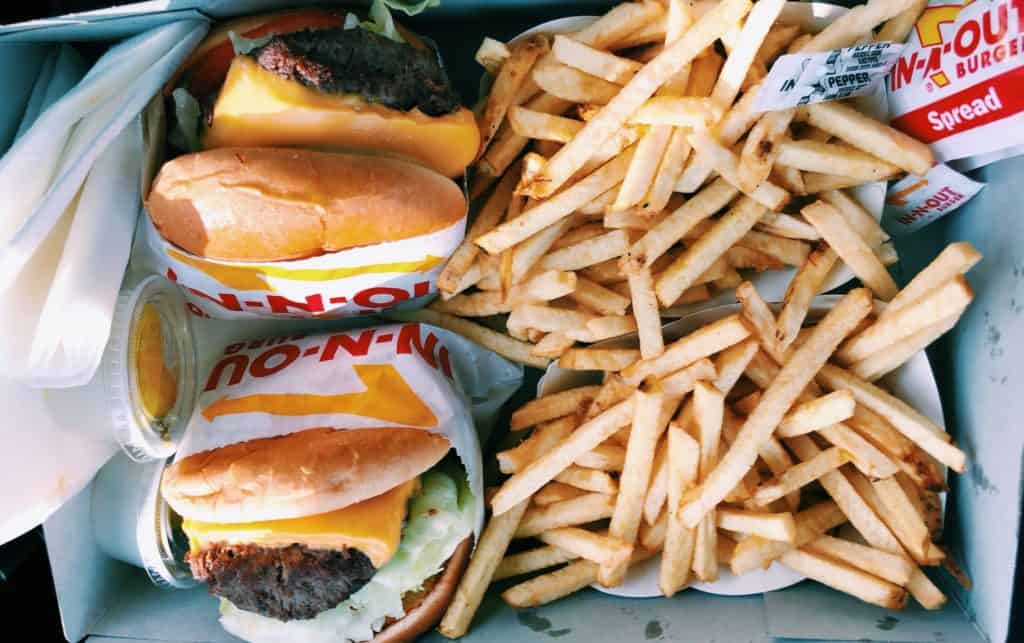
Bulking is a dieting phase where an individual increases their calorie consumption in an attempt to gain weight, ideally in the form of lean muscle tissue. A proper bulking phase revolves around a meticulous increase in calories over a period of time, not just haphazard eating.
The typical progression of a diet as summer turns to winter is to shift from a cutting phase to a bulking phase. It doesn’t necessarily have to be this way, but with holidays and the abundance of treats around, it makes sense to naturally increase calorie consumption.
Dirty bulking is a diet where an individual gets calories in by any means necessary. This typically includes a generous assortment of junk foods like ice cream, pizza, and fast food.
A dirty bulk has no real structure. The idea is simply to eat as much as you can. Gaining weight is no issue on a dirty bulk; however there is an increased likelihood that the weight comes in the form of body fat.
This makes the subsequent cutting phases much more difficult, since there is more body fat to shed. For this reason, many people believe that a dirty bulk just isn’t worth the trouble in the long run.
Benefits of Dirty Bulking
Despite the introduction of this article mainly highlighting the downsides, there are some benefits to dirty bulking.
Certain people, often classified as ectomorphs, have a very difficult time putting on weight. They genetically have a fast metabolism and/or are very active by nature, sometimes without even realizing.
You may have seen people who just can’t seem to stay still. That extra movement throughout the course of the day can burn a considerable amount of calories. If this individual is trying to gain weight, it can be challenging due to this high level of activity.
In this instance, a dirty bulk may be beneficial, or even necessary, to gain weight. Ectomorphs also may not have a large appetite. Consuming highly palatable, calorie dense foods is a great strategy for weight gain and long term dietary compliance.
It’s a lot easier to eat a blueberry muffin than a bowl of plain oatmeal with fresh fruit. While it isn’t as nutritious, the idea is to consistently consume a high calorie diet. Sometimes you have to sacrifice one to get the other.

Another benefit of dirty bulking has to do with the mental drain of dieting, regardless of the overall goal. Sticking to a diet is hard, hence the obesity crisis in current society. Tracking calories and macronutrients in an app every day can be tedious as well.
As simple as it sounds, even the most seasoned fitness enthusiasts just don’t feel like tracking or eating properly for awhile. As a nutritionist, I really don’t have an issue with someone taking a break for a period of time.
With that said, it’s important to note that bad habits are hard to break, so you don’t want to dirty bulk for too long. Someone who decides to do this has to be aware of their behaviors and patterns. It may be risky to embark on a dirty bulk if you’re going to have a difficult time shifting back to a normal routine.
Others may not have this issue. They reach a point where they just get sick of eating junk and want to go back to a healthier diet.
Most of the discussion thus far has been related to physique-based goals. However, some people may want to gain weight for athletic reasons. For example, a wrestler or powerlifter that needs to move up a weight class.
Wrestlers or fighters may need to use dirty bulking tactics to gain weight because their activity levels are very high. Wrestling, jiu jitsu, and MMA practices are very intense, and burn a tremendous amount of calories.
An athlete looking to add 10 or more pounds to their frame (and also maintain that weight) may have to consume some high calorie junk foods to do so. This is due to the body weight set point theory, which suggests that our bodies naturally want to maintain a certain weight.
This weight is usually a 5lb range. Due to the high water content of the body, weight will fluctuate slightly on a day-to-day basis.
Say for example your weight is between 180-185lbs. During short term periods of dieting or bulking, you may temporarily leave this range (in either direction). However, in the long run it usually comes right back because it’s the natural weight for your frame.
To permanently leave this range, you will have to make drastic, long term changes to the diet. This is where dirty bulking comes in.
Often times you will see lineman in pro football drop a significant amount of weight after they retire. This is because they no longer have to eat an abundance of food to keep the weight on. Once they go back to a normal diet, they return to a normal weight. Most people aren’t genetically predisposed to walk around at 300+ pounds.
What is the Proper Way to Bulk?
Dirty bulking typically leads to an unfavorable amount of body fat gain. However, some people want to put on a significant amount of muscle while minimizing fat accumulation.
As a lifter becomes more advanced, the body becomes more resistant to adding muscle mass. At a certain point you basically have to bulk in order to add muscle.
A proper bulk is a systematic and structured increase in calories over time to add muscle while minimizing fat gain.
The first step is to determine your calorie maintenance. This is the amount of calories needed to maintain your body weight. The factors involved in determining calorie maintenance are current weight, body fat, age, gender, and activity level.
A google search for total daily energy expenditure (TDEE) calculator will help you find this number. It is not an exact science, so some trial and error may be involved.
The simplest way to determine if a specific calorie total is your maintenance is to consume that total for 5-10 days and monitor your weight. If weight generally stays the same, it’s probably accurate.
Most people skip this step, but you can’t expect to bulk properly if you don’t have a starting point.
After determining your calorie maintenance, you have to decide how aggressively you want to bulk. A 20% increase in calories is considered aggressive while a 10% increase in the standard.
The mistake most people make throughout the course of a bulk is that they add calories based on arbitrary time frames.
For example, they decide beforehand that they will add 20% more calories every 2 weeks. But if you are already gaining weight at a steady pace on a given calorie intake, what is the point of adding more? The key is to add more when progress stalls, not because the calendar said so.
Calories should be added only when weight gain remains steady for a period of a week or more. At that point you can be certain that an increase in calories is necessary.
Summary
Dirty bulking is a dietary strategy that involves consuming a significant amount of high calorie, highly palatable junk foods with the goal of gaining weight and muscle mass. For most people this isn’t a viable strategy, since it leads to unwanted fat gain.
While fat gain is inevitable in the bulking process, a dirty bulk can add so much fat mass that it becomes challenging to shed it in the long run.
A dirty bulk is only beneficial for people with an ectomorph body type who have a hard time gaining weight, or for athletes looking to move up in weight for a sport such as wrestling, mixed martial arts, or football.
A temporary dirty bulk may also work for people who want a break from the monotonous process of tracking calories and dieting.
In most instances, however, a dirty bulk does more harm than good and can lead to bad dietary habits and unfavorable physique changes.
Recent Posts
Stretching Before Workouts: Essential Warmup or Performance Killer
“Don’t stretch before workouts, your muscles become too supple” “Stretch before your workouts, warming up is important” It's conflicting advice like this that drives people crazy,...
Best Protein Bar For the Money | Cost Effective, High Quality
Protein bars are no longer a supplement dedicated to diehard gym rats, with awful taste and the consistency of a brick. Men, women, and even teenagers can commonly be seen eating protein bars. The...
